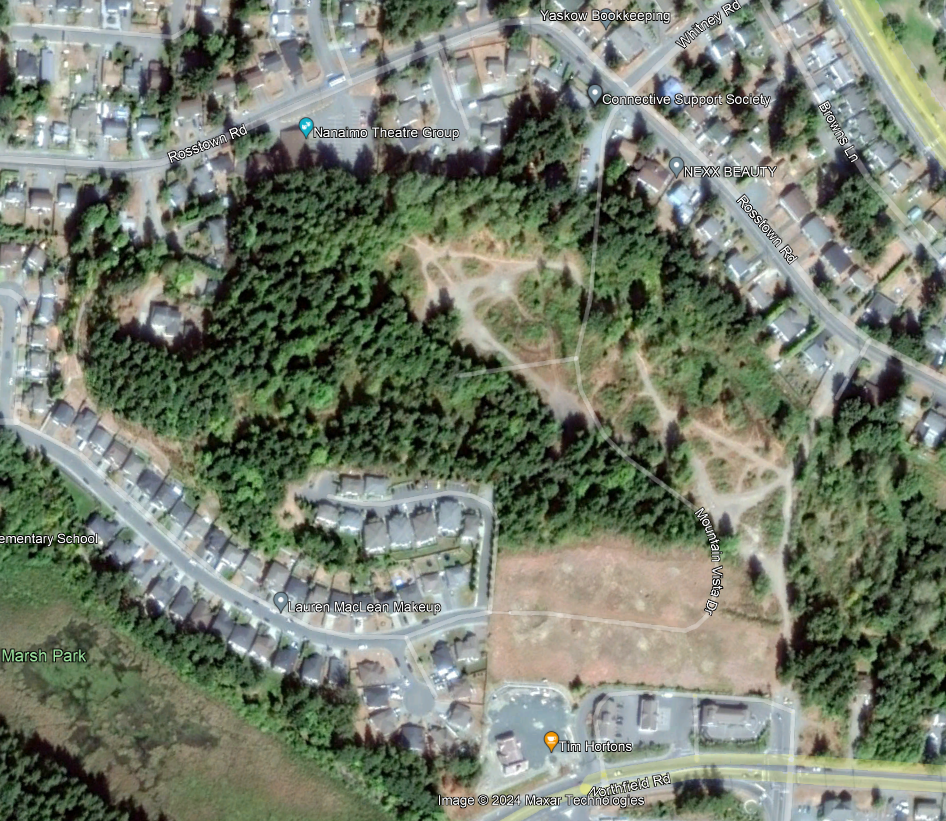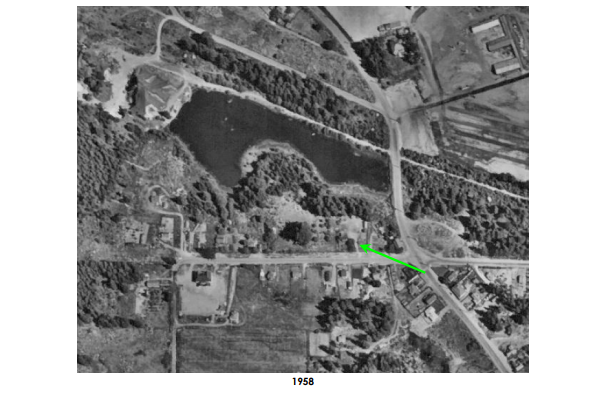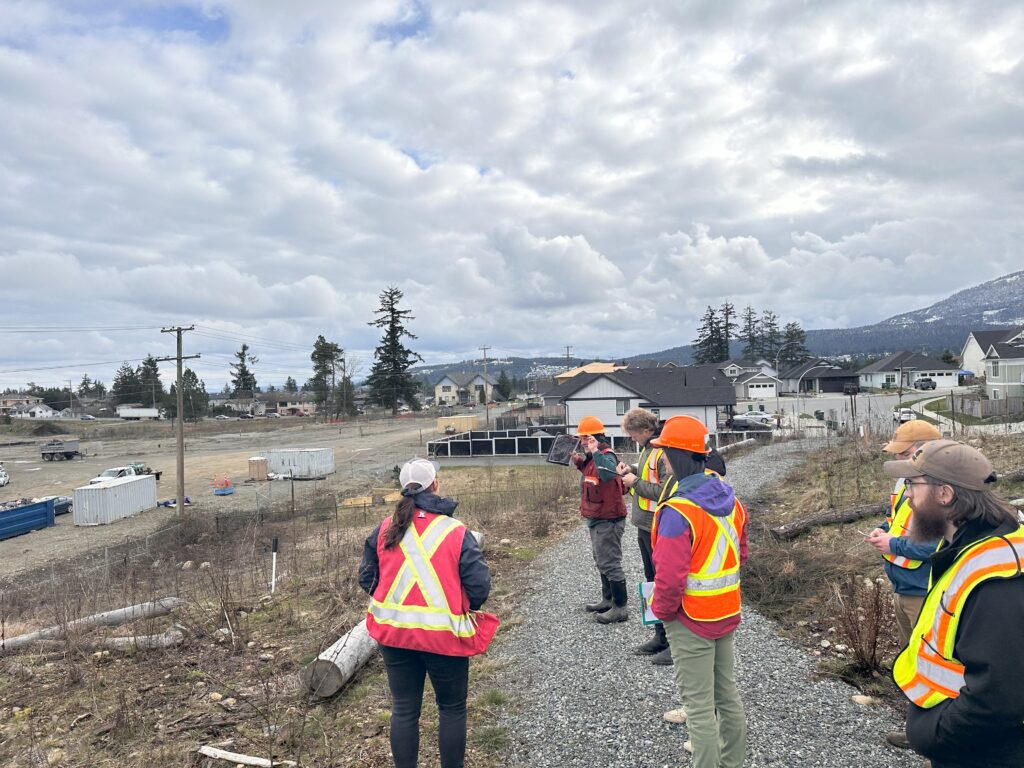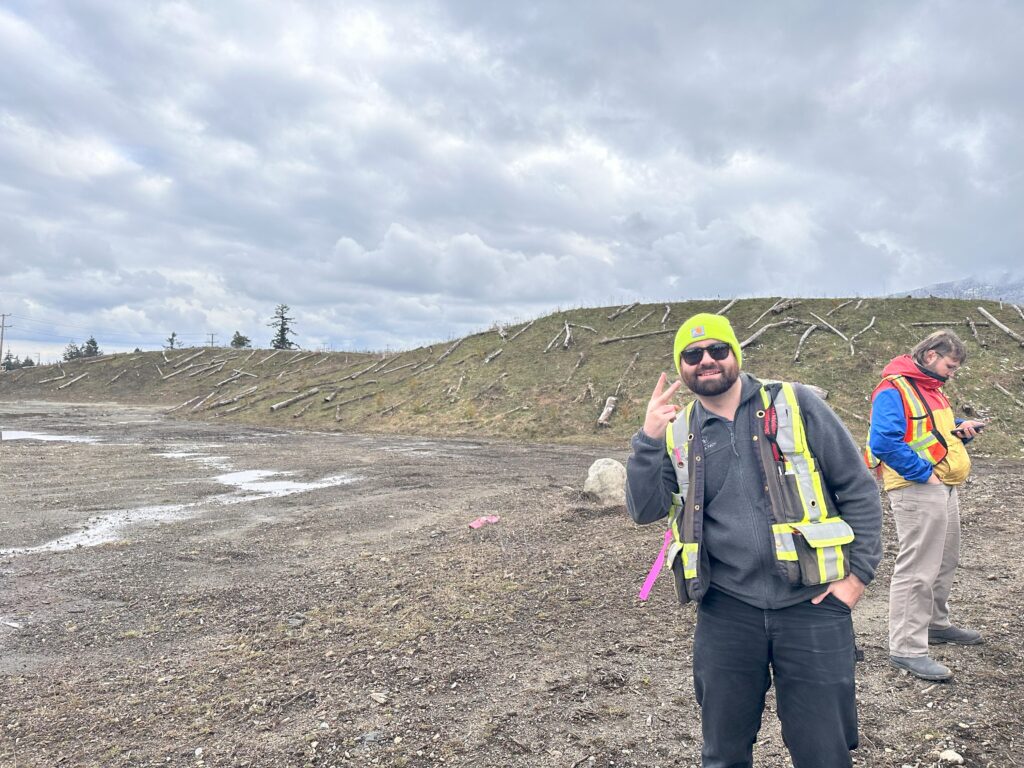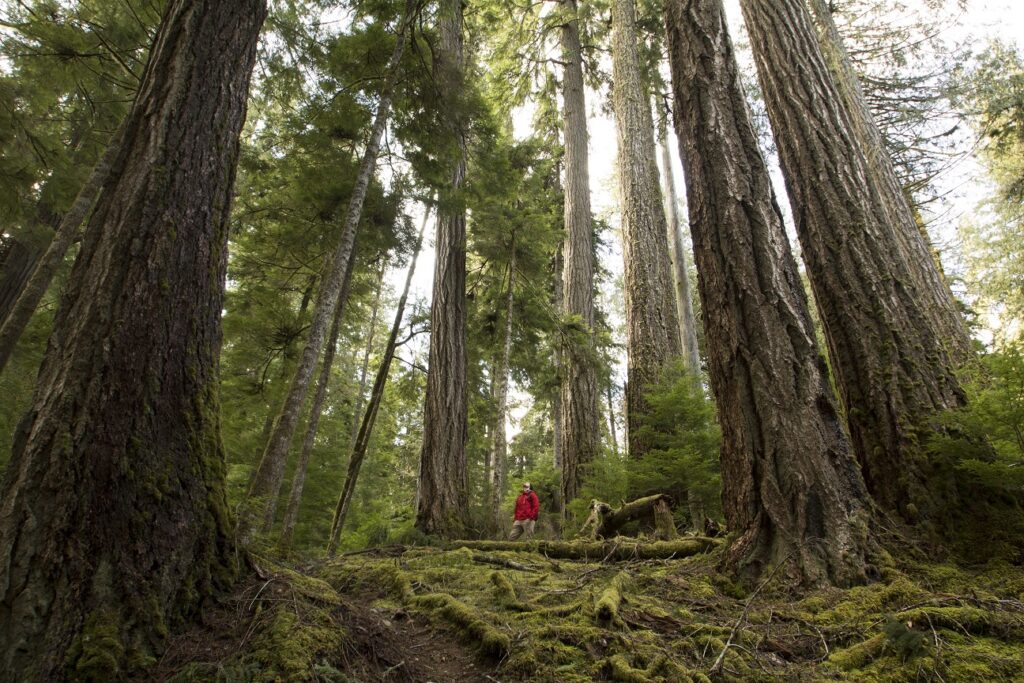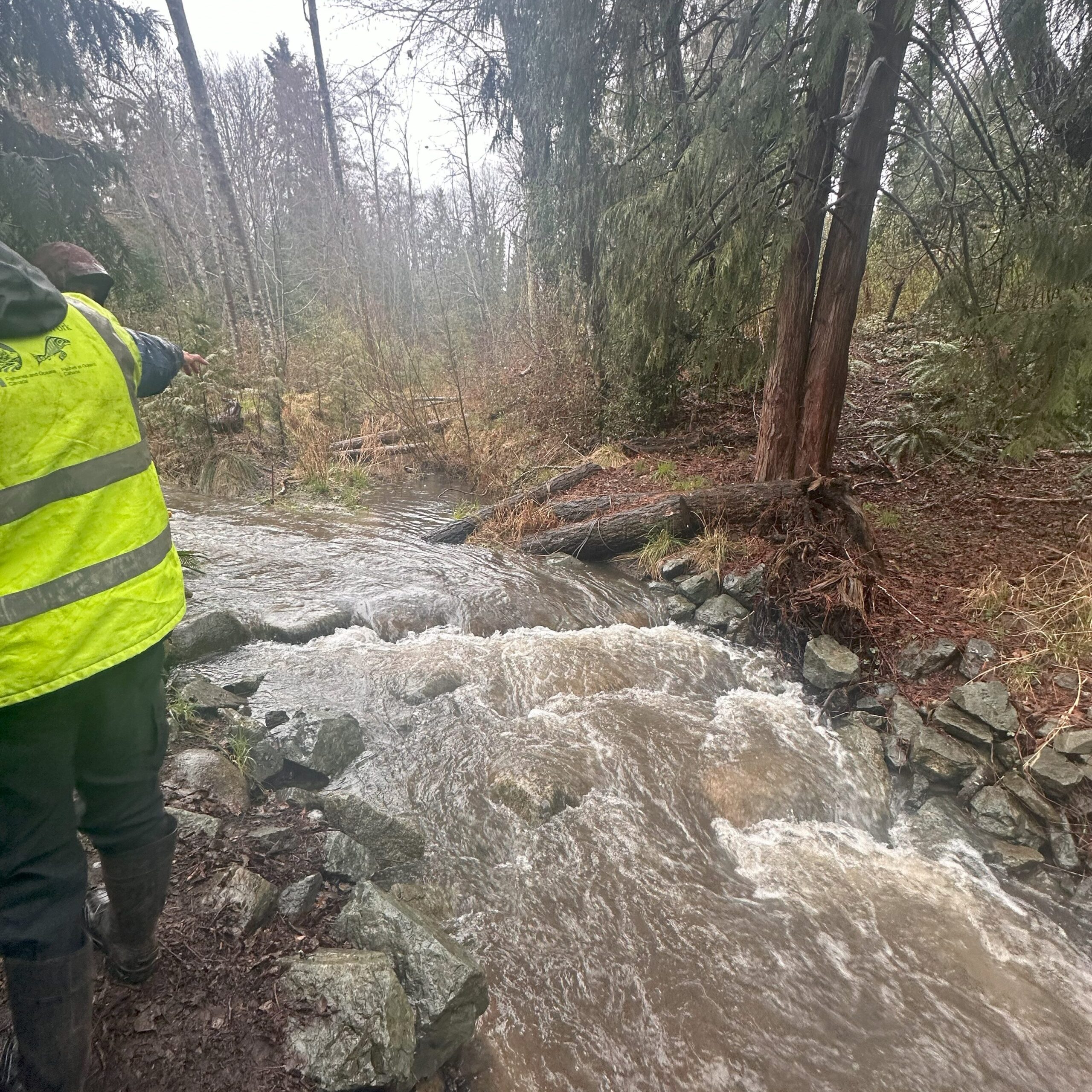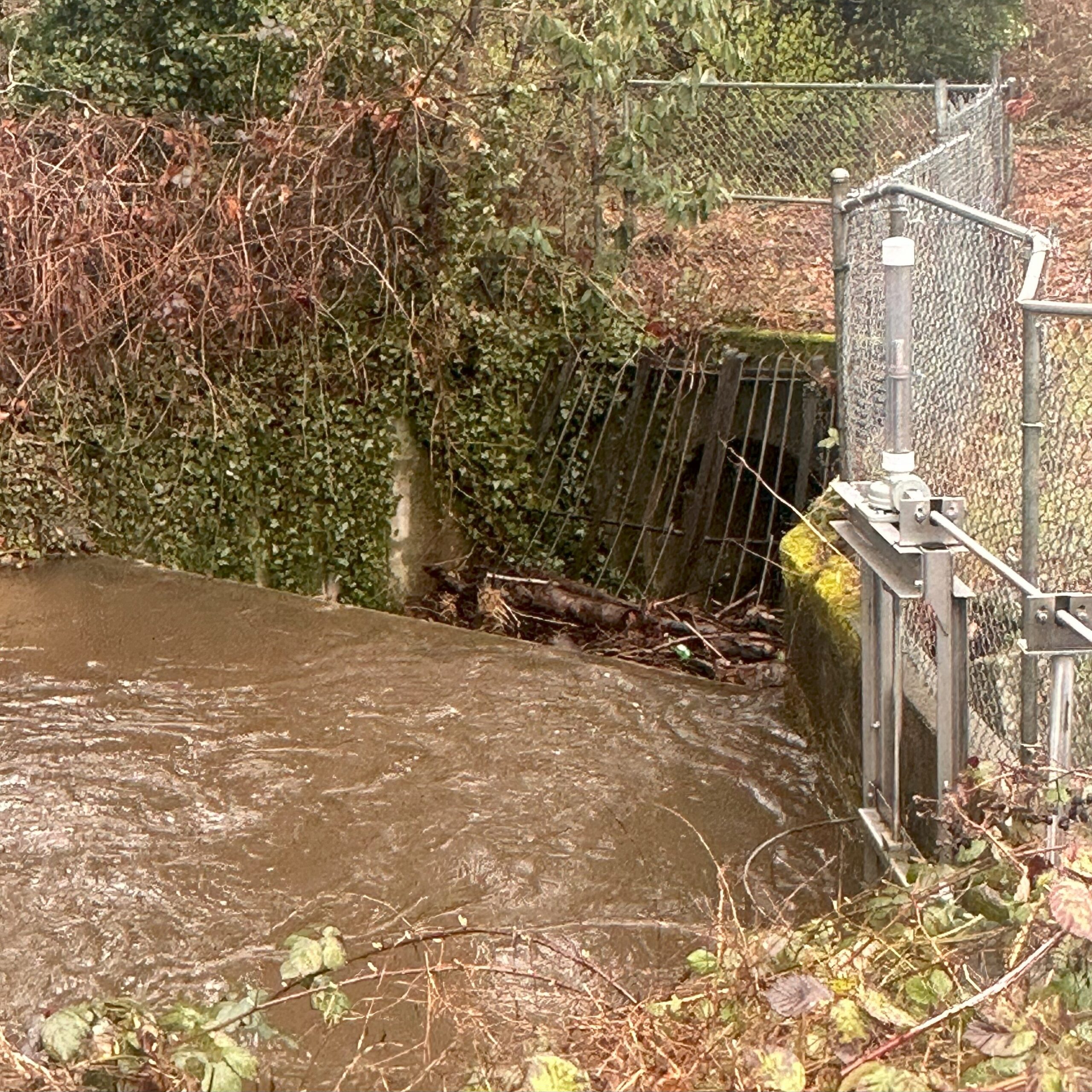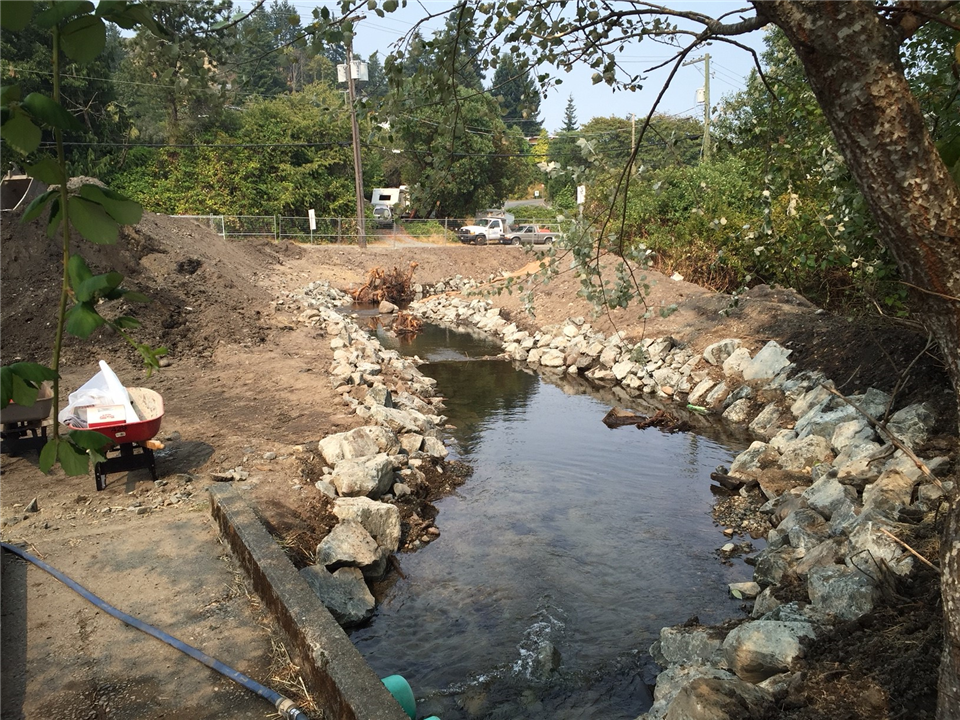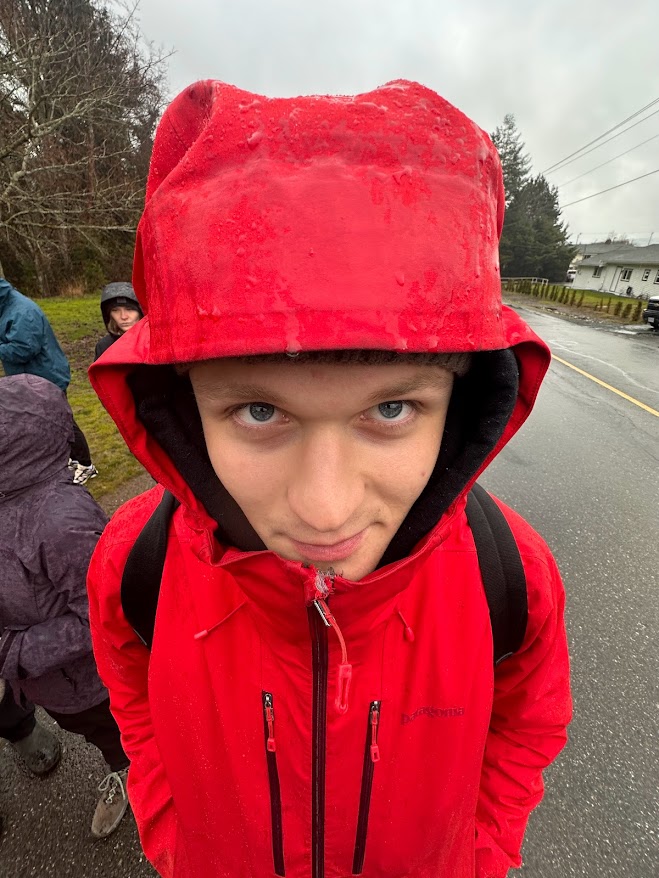Background
The landfill is believed to have began as a former open pit coal mine which waste was dumped into around the 1930’s cause “hey! we gotta big hole in the ground now, may as well fill it with something”. Dumping of various waste types continued until the regional district of Nanaimo purchased the land and continued operation.
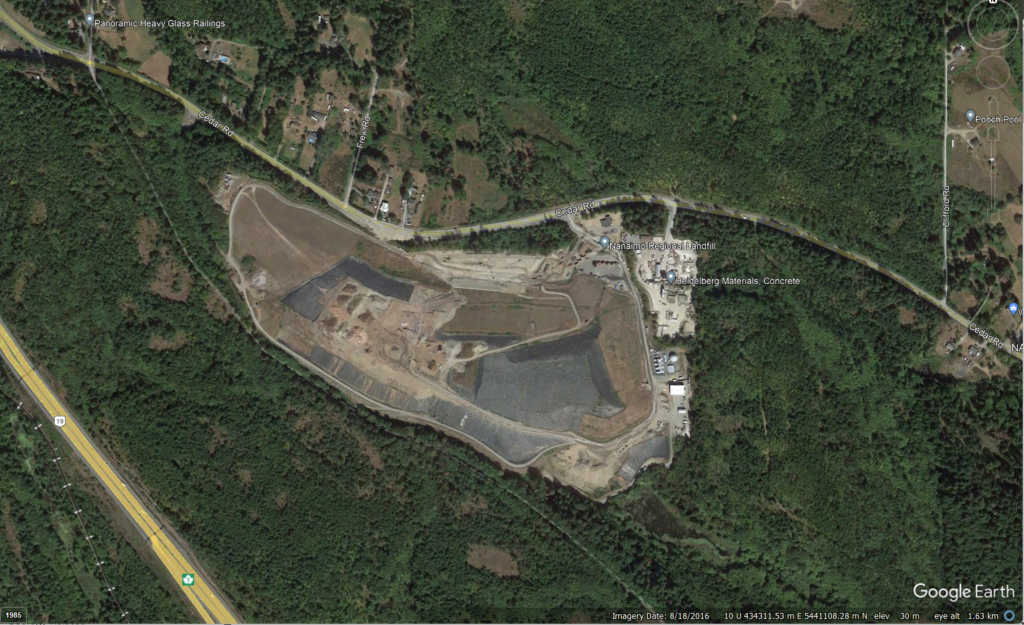
Nanaimo’s SWMP
The Regional District of Nanaimo oversees solid waste management and has set a goal to reduce landfill waste by 90% by 2029. The City of Nanaimo plans to implement various programs aimed at waste reduction. These initiatives include; zero waste education, household hazardous waste collection, managing industrial, commercial, and institutional waste more effectively, improving construction waste management, licensing waste haulers to incentivize diversion over disposal, and investing in zero waste recycling research and facilities. Through these efforts, Nanaimo residents, businesses, and institutions are encouraged to participate actively in waste reduction to achieve the region’s solid waste management goals.
Field Trip
The field trip occured on Wednesday, March 13th on a beautiful sunny day. The possibilty for the smell of steaming garbage was heavy on the minds for all classmates. But once we arrived at the landfill those thoughts were put to ease as it actually didnt smell too bad at all. We were met at the front office by Chad, a p.geo who monitors the leachate and contamination levels around the site. Chad got his degree at the University of Saskatchewan in geology, he then moved from various exploration companies until he slowy got more involved in the environmental side of geology. At the front office parking lot, Chad gave us a nice debrief on the ins and outs of the landfill. We learned that the RDN landfill collects around 60,000 tonnes of garbage a year, which comes around to about 500 cubic metres per hour.
We then took the bus on drove through the site. We stopped near the methane burn stack and discussed methane collection at the site. The site consits of 50 vertical and 20 horizontal wells that “vacuum” out the emitted gases. The horizontal wells are more efficient however harder to place compared to vertical wells. The methane is currently collected and flared in order to convert methane to carbon dioxide which is a less harmful greenhouse gas. The methane used to be collected and converted to energy by a private company however it was not a profitable company. Fortis BC however is thinking of attempting to hook into the system and convert the methane to energy.

We continued up the hill and looked at a shredder that was in a pilot program where they would grind up the garbage before laying it down. This allowed the garbage to be put into the landfill at a higher density than normal which is important because the site has a finite “air space” in terms of slope and parcel size. This then extends the life of the site by allowing more garbage to be packed into the hill. This method is especially usefull on large items such as mattress or couches, both of which have a habit of continually pushing to the surface even when it is packed many times by a trash compactor.
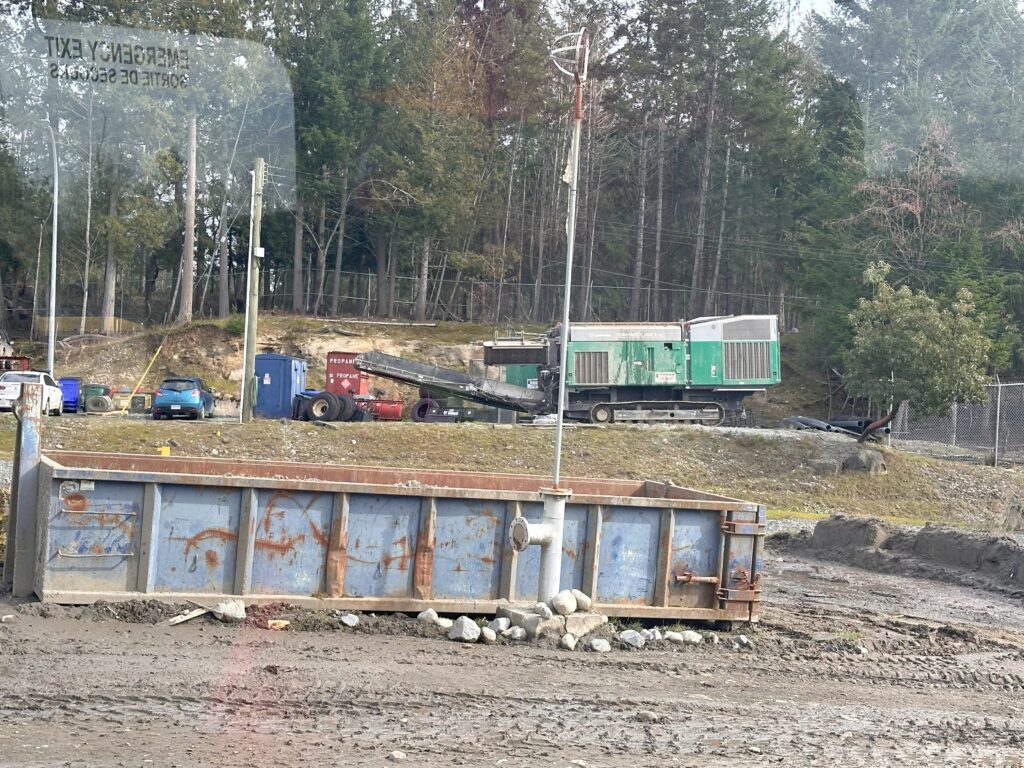
Continuing up the hill, we stopped at the top to watch the landfill operator process. It was actually quite the process! A good density of around 4 machines working to complete different tasks. A front loader would scoop up garbage, drop it infront of the trash compactor then back up and let the compactor skim over the top and compact the garbage in around 5 passes. The trash compactor is a 80 tonne machine and its actually the large spiked wheels that do the majority of the work. The machines had to work carefully as there was a methane well pipe sticking up at surface. To the right of the operation there were about 4 very large metal “platforms”. These platforms are used to go on top of the garbage when work has halted in order to prevent birds from getting in there and also reduces amount of rainwater that enters the garbage. More water in the material leads to more leachate.
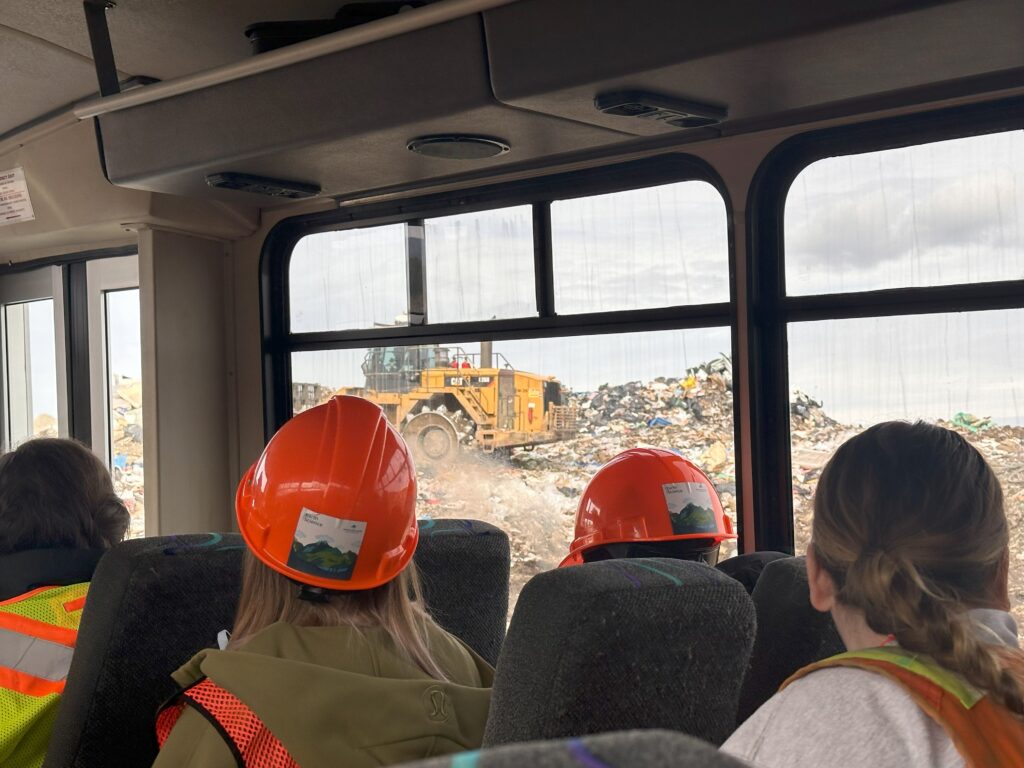
We wrapped up by heading down to the bird coops to check out a harris’ hawk. A bird like this is used to scare away the birds from site. They do this in order to prevent birds ingesting the garbage and spreading the garbage around the local area if they fly away with it.
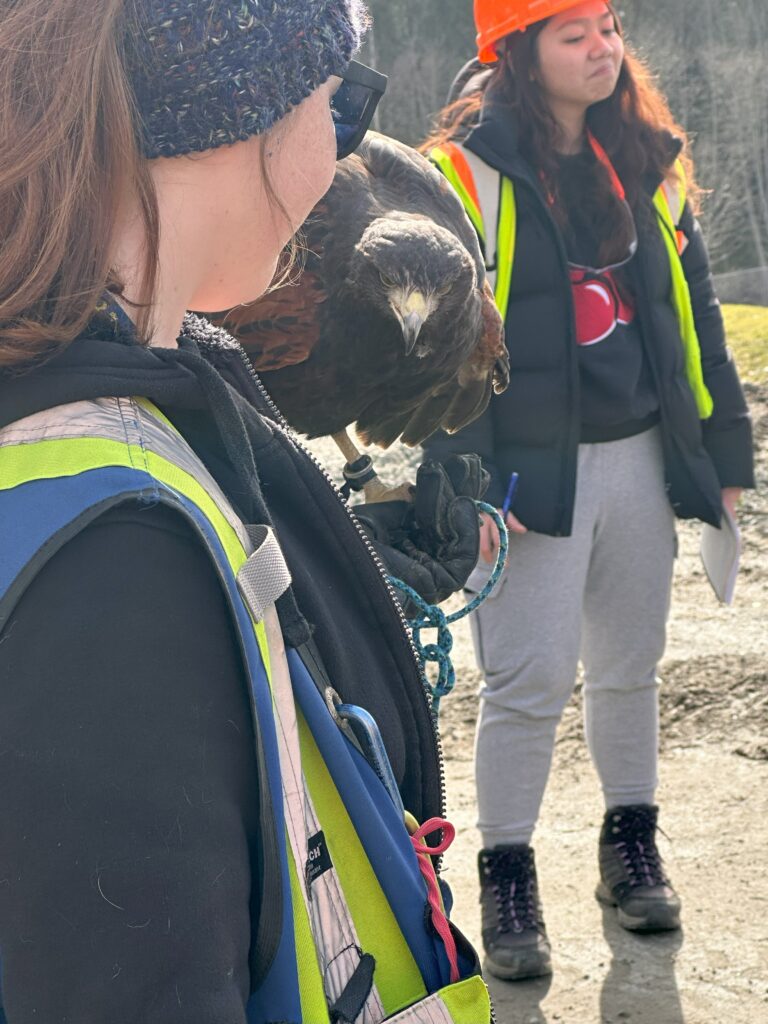
Conclusion
The RDN is about to invest a sizeable amount of money for a consultant to find them an area in the district that would suffice for the next site of a landfill. Because they only have around 15 years of life on the current site, they need to start thinking of the future. A big discussion with siting a new landfill is the thought of NIMBY (Not in my backyard). Chad argues that having many small landfills is the most effiecent and eco-friendly (assuming humans still consume a lot). This is based off emissions for transport and it allows people to become more involved in where there waste goes and how it gets processed.
Overall this was a great field trip and it definitly opened my eyes to how I view my waste and how my waste effects the environment.

